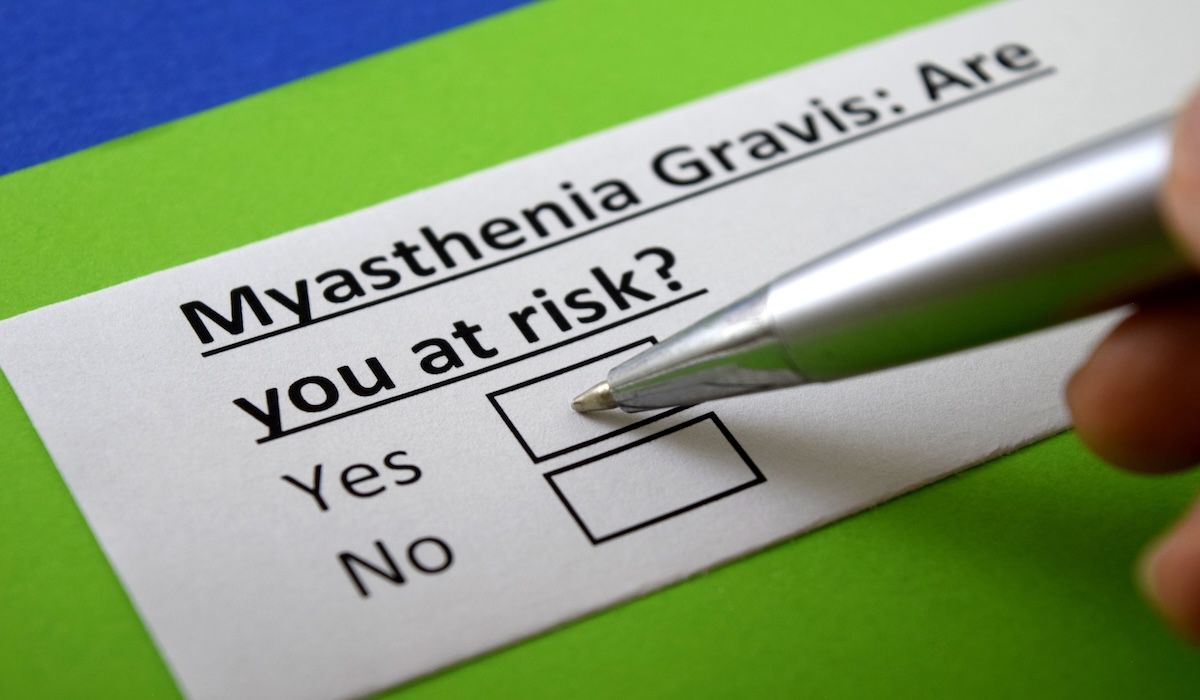Patients who have myasthenia gravis, even those with low disease activity, continue to potentially be burdened by inadequate treatment and care, as evidenced by the results of a retrospective analysis published in Journal of Neurology.1 Authors found that EuroQol 5-Dimension (EQ-5D) results indicate considerably decreased quality of life (QOL) in the setting of the autoimmune disorder even among the patients who have low disease activity, and that this only worsens with increased disease activity.
EQ-5D measures QOL according to the 5 health dimensions (EQ-5D-5L) of mobility, self-care, usual activities, pain/discomfort, and anxiety/depression, each of which has 5 levels of severity: no, slight, moderate, severe, and extreme problems.2
For the present investigation, the authors used EQ-5D-3L—which the Swedish nationwide MG registry used until 2023—and outcomes were compared between patients in the Swedish nationwide MG registry and the general population, at baseline and longitudinally across disease activity levels. Data on 47 patients were provided by the RINOMAX trial (NCT02950155), completed in 20223, that compared rituximab vs placebo over 48 weeks among individuals with new-onset generalized myasthenia gravis. The control cohort comprised 103 patients who did not have myasthenia gravis. Overall, 55% of participants were male patients, the mean (SD) age of disease onset was 55 (19) years, 89% were anti–acetylecholine receptor (AChR) antibody positive, the most common disease subset was late onset (63%), and the most often prescribed treatment at baseline was acetylcholine esterase inhibitors (72%). MG-activities of daily life (MG-ADL) and EQ-5D-3L scores were recorded 6 times throughout the study period.
Even a 1-point higher change in ADL score change correlated to a 0.025-point lowering of the EQ-5D score (P = .057) during the study. | Image Credit: © Richelle-stock.adobe.com
The overall mean disease duration was 9 (10) years.
Overall, at baseline the mean EQ-5D score was higher in the participants with myasthenia gravis (0.81 [0.04]) vs the general population (0.70 [0.27]). In addition, the impact on the patients with myasthenia gravis on each of the 5 dimensions was statistically significantly more severe (all P < .001):
- Mobility: 37% vs 11%
- Self-care: 9% vs 2%
- Usual activities: 44% vs 6%
- Pain/discomfort: 64% vs 44%
- Anxiety/depression: 46% vs 29%
Stronger associations were seen between EQ-5D and both MG-ADL and MG-QOL-15 (both P < .001) compared with EQ-5D and physician-evaluated and quantitative myasthenia gravis measure (QMG) (P = .003). Patient acceptable symptom scores also were used to stratify patients, per predetermined cutoffs (MG–ADL ≤ 2 points, QMG ≤ 7 points, MG–QOL-15 ≤ 8 points), and results from all 3 showed that patients with scores above vs below the cutoffs reported significantly worse EQ-5D scores:
- MG-ADL: 0.86 (0.16) vs 0.65 (0.28) (P < .001)
- MG-QOL-15: 0.87 (0.17) vs 0.62 (0.28) (P < .001)
- QMG: 0.73 (0.27) vs 0.61 (0.32) (P = .1)
Drilling down even further for the impact of disease activity, an MG-ADL score change of 2 or fewer points was linked to a significant decrease in EQ-5D score (P < .003), while patients with MG-ADL score changes of 6 to 9 points (0.60 [0.28]) and at least 10 points (0.58 [0.39]) had similar EQ-5D scores.
Next, according to muscle group, the greatest impact on EQ-5D was seen in relation to respiratory and limb function (both P < .001) vs ocular and bulbar items (both P < .001), “indicating that a 1-point change in limb and respiratory muscle groups would impact the EQ-5D score most,” the authors wrote.
Even a 1-point higher change in ADL score change correlated to a 0.025-point lowering of the EQ-5D score (P = .057) during the study, while during follow-up, a 1-point rise in ADL score change was associated with a 0.050-point faster rate of reduction in the EQ-5D score (P < .001).
The authors explained that their results show a consistent and significant impact of myasthenia gravis across all dimensions of the EQ-5D scale compared with a control population, “particularly in usual activities.” However, they did note that the mean EQ-5D scores seen among their patient population were lower vs previous analyses in other diseases, which caught them off guard, “as myasthenia gravis is typically not a progressive disease and with only slightly increased mortality rates.”
Their conclusion was that there is a likely “an unmet medical need at low to moderate disease activity, in turn raising the question if also patients with milder disease activity scores should be included in clinical trials to develop more effective treatment algorithms.”
References
- Petersson M, Wu J, Berggren F, Schager I, Piehl F, Brauner S. Impact of disease activity on quality of life and EQ‑5D‑3L score in myasthenia gravis: results from the Swedish MG registry. J Neurol. 2025;272(9):562. doi:10.1007/s00415-025-13298-4
- EQ-5D-5L. Euroqol. Accessed August 14, 2025. https://euroqol.org/information-and-support/euroqol-instruments/eq-5d-5l/
- A study evaluating the safety and efficacy of rituximab in patients with myasthenia gravis (Rinomax). ClinicalTrials.gov. Updated October 26, 2024. Accessed August 14, 2025. https://clinicaltrials.gov/study/NCT02950155
